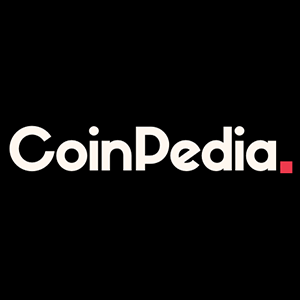Summary Bitcoin's current bull run is driven by momentum, making it a high beta investment, but traditional valuation methods are challenging. BITO ETF tracks bitcoin via CME futures, but its structure leads to high dividends and lagging performance compared to spot bitcoin ETFs like IBIT. BITO's high monthly dividend impacts price performance, making it better suited for short-term options rather than long-term LEAPs. Despite its flaws, BITO is the only bitcoin ETF offering options, making it useful for conservative investors until other ETFs implement options. Thesis If an investor opened their trading screens today in the cryptocurrency sector, they might have had a bit of a shock: Bitcoin funds are up roughly +10% on the day, with other crypto names outperforming. While today's price action might remind some investors of 2021, the current bull run can go on longer than expected, with momentum a powerful factor to consider. While we are having a hard time valuing Bitcoin (BTC-USD) on traditional fundamental factors (i.e. cash flow, earnings, etc.), it has undoubtedly become an asset class that exhibits the same characteristics as other high beta investments. With momentum behind bitcoin, we are going to show investors why the ProShares Bitcoin ETF ( BITO ) is an imperfect instrument to use when looking for capturing long-term spot moves in the cryptocurrency, and why the exchange-traded fund is better suited for option positions. BITO - a fund based on bitcoin futures BITO is an ETF which seeks to track the price of bitcoin: BITO seeks results, before fees and expenses, that correspond to the performance of bitcoin. BITO invests in bitcoin futures and does not invest in bitcoin. There is no guarantee the fund will closely track bitcoin returns. However, the fund takes a traditional capital markets approach and does not use crypto wallets, investing via CME listed bitcoin futures: Holdings (Fund website) As per the above table from the fund website, the name is currently holding the front month bitcoin futures. A large amount of the fund net cash is parked in T-Bills. Investing via futures has an expense aspect to it as well as the futures 'roll' effect. As we will notice in the next section, BITO lags outright bitcoin funds when looked at on a year to date basis due to these factors. Year to date performance highlights the problems with BITO Although bitcoin is up over 76% for the year, BITO is lagging: Bitcoin funds Total Returns (Seeking Alpha) We are using the iShares Bitcoin Trust ETF ( IBIT ) as a comparison and a graph start date of January 15, 2024, to account for the IBIT start date. Also, kindly note, we are using a total return graph above to account for BITO's high dividend. If we were using just a price graph, it would look like this: Price move (Seeking Alpha) BITO tends to distribute all its gains via a high dividend yield, whereas IBIT tracks the bitcoin price and thus provides for capital gains. High dividend distribution Due to the ETF structure that uses futures rather than spot Bitcoin, BITO distributes a very high monthly dividend: Dividends (Seeking Alpha) Most of the fund gains actually come via the dividend distribution rather than capital gains. This is very important for investors who look at tax implications and choosing an asset class which appreciates in value versus one that offers a high distribution. Furthermore, when structuring options, it is important to understand the price implications for a high distribution. An option is the right to purchase BITO at a later date at a certain price. When a fund has a high distribution, in effect, it undercuts the price performance. Although bitcoin is up significantly for the year, BITO is roughly flat. When structuring options and their price, an investor needs to factor in the high distribution. In effect, from a price perspective, BITO is a series of 1-month options. If an investor buys a long-dated option here, they run the risk of small returns even if bitcoin moves higher, due to the distributive nature of the fund. As we can see from the above table, the ETF pays out every month, at the beginning of the month. From October 1, 2024, to November 1, 2024, the BITO price was the result of the intra-period move in the cryptocurrency. Post the distribution, the price went down. Thus, the structure favors shorter dated options. Are there options on other bitcoin ETFs? Not yet. What sets BITO apart though is the access it offers to options . As per the Seeking Alpha platform page, we can see that an investor can easily trade options on BITO, thus gaining access to using options on the underlying asset class. Options are favored by many when it comes to bitcoin due to the large moves observed historically for this asset class. Conservative investors can also limit the damage to their accounts when drawdowns occur via options (as a reminder, a bought call has the paid premium as the maximum downside). Ideally, an investor should have access to options on IBIT or the other spot bitcoin ETFs. While the SEC has now approved the move, options have yet to be implemented: Oct 18 (Reuters) - The U.S. securities regulator has granted "accelerated approval" to the New York Stock Exchange to list and trade options tied to three spot bitcoin exchange-traded funds, according to a regulatory filing. Therefore, as of today, investors are still reliant on BITO and its structure in order to utilize options. Despite the above-mentioned structuring issues, BITO is still the only ETF that allows for the efficient use of options in order to take positions on bitcoin via a traditional brokerage account. Conclusion Bitcoin is now an established asset class with a very volatile return profile. The BITO ETF seeks to track bitcoin's performance via CME listed futures, but represents an imperfect way to track the asset class. Due to tax implications and its structure, BITO pays out a very high monthly dividend yield, thus disbursing gains via its dividends rather than capital appreciation. Furthermore, due to the fund's high expense ratio of 0.95% and the 'roll' effect present for futures, BITO lags spot bitcoin ETFs such as IBIT (over 9% lag in 2024). The one feature that BITO has, but other bitcoin ETFs currently don't, is the ability to use options. Investors are able to use BITO call options to profit from bitcoin's appreciation, while waiting for the market implementation for other bitcoin ETFs after the SEC's approval. We are of the opinion that a retail investor looking to get outright bitcoin exposure for an extended period is better served by ETFs such as IBIT, whereas more conservative market players looking for bitcoin plays via options are correct in looking at BITO.

















